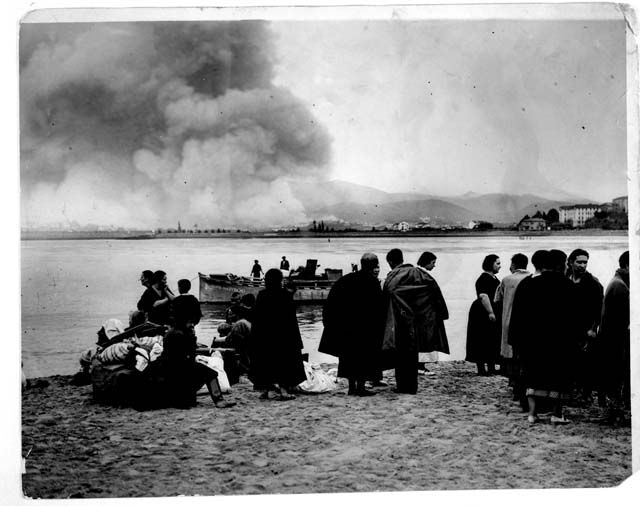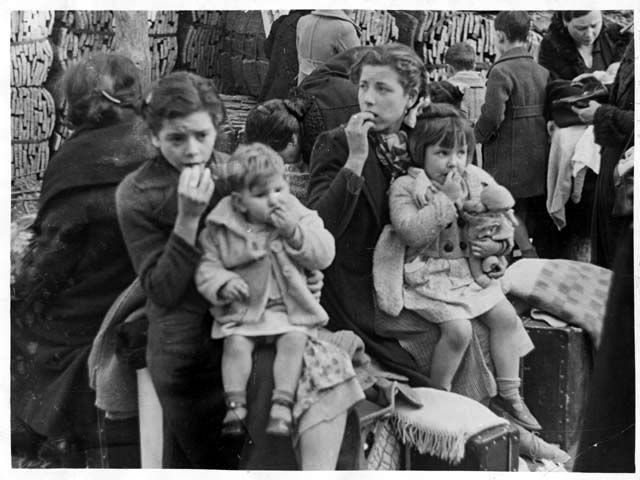Salv
One Too Many
- Messages
- 1,247
- Location
- Just outside London
And interviews in the Guardian from a few years ago with many of the then surviving British International Brigaders here
Sierra Charriba said:Hello, Linc
Hitch- hicker was much more common in 60's and 70's than now. And much more safe in the mind of many people. Special permission was no necessary.Now, is almost impossible to see hitch-hickers in spanish roads.
Yes, some clergy were against Franco in 70's. Where are they now? Nobody knows...
The Church is against the socialist government, in a new "crusade" (fortunately, this time without guns). They are the Bad Men in Black.
Regards
Sierra Charriba said:Now the Church is completely opposed to educational laws of Zapatero gevernment. They want the Religion be a subjet with the same academic valour than Science or Grammary. It's something hard to believe in a modern and democratic country, but really, the politics of Zapatero about the Church is the same that any liberal country did in XIX and XX centuries. It seems incredible, but is true.
You are joking with the "ironing protests", don't you? Really someone thinks that in USA?lol
The politics about firearms are in Spain exactly the same from 1992. Is hard to get legally a pistol, but Spain is a country with many hunters and there's a lot of legal hunter rifles and shotguns. We have not problems in the "Bowling for Columbine", except one case or two each 40 years.
What date was it? April 1st? A google search for madrid ironing protest or spain ironing protest didn't turn up anything - it may have been a joke.Lincsong said:I'm not joking about the "ironing protests"lol lol I wish I were joking, but I read it, darn I wish I remember which magazine. Must of been Newsweek or Time. But the magazine actually showed men on the sidewalk ironing clothes to show their feminine side.I'm glad that someone denies it.
A "false lie" - does that mean it's true?Lincsong said:"Bowling for Columbine" is a false lie. Don't believe such garbage.

Lincsong said:I'm not joking about the "ironing protests"lol lol I wish I were joking, but I read it, darn I wish I remember which magazine. Must of been Newsweek or Time. But the magazine actually showed men on the sidewalk ironing clothes to show their feminine side.
dr greg said:...I also read recently but can't recall where about the famous incident at the Alcazar where the Nationalist General tells his hostage son on the phone that he will not surrender and to "die for Spain". apparently this was all bull and the son is still alive...great story about propaganda which has counterparts today...remember the Kuwait babies.
Robert Conway said:Robert Capa, the legendary war photographer who took part in the D-Day landings, made his name during the Spanish Civil War.
See his work from this conflict here:
http://tinyurl.com/erel9
Among the photos he took during the campaign is this extremely famous one:
http://tinyurl.com/5by8a


Lincsong said:Excellent photos Lena, and it is always a pleasure to have you join our discussion. Not a "crashing" at all.
Lena_Horne said:I'd hate to crash the thread, but I was so glad I stumbled upon this today. The Spanish Civil War has been an amazing distraction for me over the past month, specifically the plight of the refugees streaming into France and Britain:
While looking it up on Google, I came across this site: http://orpheus.ucsd.edu/speccoll/swphotojournalism/index.html
...
L_H



